What does Apple's ResearchKit bring to the medical community after its launch?
Release date: 2016-08-11
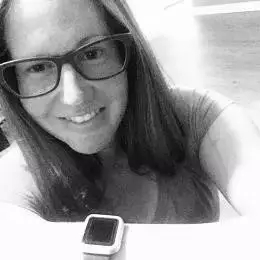
Shaina Mims
She was diagnosed with a "chronic, recurrent, unexplained" neurological epilepsy compared to a seizure that would bite her tongue and have a bruise. Although this epilepsy only affects the brain, But in a sense, the situation is even worse.
For Shaina, her life is full of anxiety and fear of seizures. She is afraid that she will be in public, afraid of being attacked in front of strangers, afraid of being attacked while driving. And all of this is not as good as the fear of re-awake after the attack.
When people witnessed her epileptic seizures, she saw her empty eyes, stiff legs, arms like a puppet, and she was faced with a very embarrassing situation after she was awake. Shaina said that what she couldn't stand most was to face people's eyes. "I can only sit there and cry because I don't remember what happened just now." She felt deeply desperate.
Medically, it takes 10 minutes for a person to fully recover from a seizure. But Shaina said she needed an hour to fully recover.
To get rid of the fear of epileptic seizures, Shaina decided to participate in the Johns Hopkins Institute's research on EpiWatch applications.
EpiWatch, an app on Apple Watch, uses Apple's ResearchKit open source software architecture to capture data from Dr. Nathan Crone and Dr. Gregory Krauss, the neurology of Johns Hopkins University School of Medicine. Professors develop research, the most powerful thing about this app is the ability to "recognize seizures."
EpiWatch application introduction film
"Identifying the onset of epilepsy" is not a simple task. Over the years, countless researchers and developers have worked to develop devices that recognize and predict seizures, and a large number of paper studies and applications have emerged in this area. Some researchers want to use the health data recorded by wearable devices to identify similar patterns of each seizure to predict; some researchers want to use brain waves directly to predict seizures; some researchers have brain holes Wide open, using the dog's specific ability to detect the onset of epilepsy.
Although researchers and institutions in the field have invested a lot of energy and resources, the episode of epilepsy is still elusive. Seizures are inherently unpredictable. Up to now, our best science and technology are still at a loss in the face of this problem.
Let's go back and talk about Shaina, a 31-year-old epileptic. In the study by Johns Hopkins, Shaina is very important because she is one of the patients in the group who can feel the "precursor of the attack." Feeling the harbinger of the disease before seizures? How to say it is a bit mysterious.
"The aura is unique to everyone," Shaina said. "And it's hard to describe this feeling for people without aura." "In most cases, I feel like I am sitting on a carousel. My consciousness is constantly spinning. Sometimes I feel like I am in a tunnel, and a gust of wind blows over my head."
In fact, the data generated by people with "precursions" is more valuable. Because they have more precise time from onset to complete recovery, and more accurately record the physical and mental effects of epilepsy. Therefore, these important biomarkers can be found at the earliest stages of seizures.
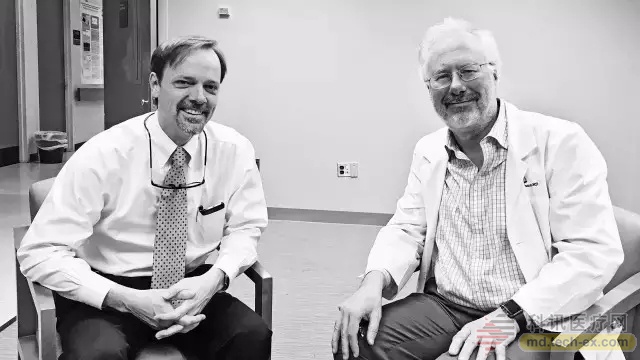
Dr. Nathan Crone and Dr. Gregory Krauss
These biomarkers are key to identifying seizures in other epilepsy patients. "Especially for some epileptic patients with particularly severe conditions, these biomarkers can identify seizures prior to the patient's self-awareness," Professor Krauss said. Epilepsy episodes and nighttime seizures are particularly dangerous categories, and these two types of epilepsy pose a significant threat to the life and health of patients.
 
Previously available wearables have limited capabilities to identify and predict seizures, first because the data recorded by the sensors is not accurate enough, and second because their user interfaces are not sufficiently friendly. So in 2015, Apple’s release of Apple Watch’s high-profile entry into the wearable market caught the attention of Crone and Krauss.
"The Apple Watch basically has all the sensors on the market, and its user interface is very friendly, so we can consider whether it can be used to identify epileptic seizures," Crone said. With better equipment and lessons learned from past failures, Professor Crone and Krauss are ready to use Apple Watch to develop a new application, EpiWatch, which is not used to predict, but to identify epileptic seizures, especially It is aimed at patients with "precursions" like Shaina.
The EpiWatch app is very simple to operate from the user's point of view. Because patients with epilepsy may be partially unconscious or completely unconscious during the onset of the disease, the EpiWatch application determines the degree of consciousness of the patient by asking questions to the patient. When the patient feels a precursor to epileptic seizures, they can launch the EpiWatch app by tapping the shiny spiral button.
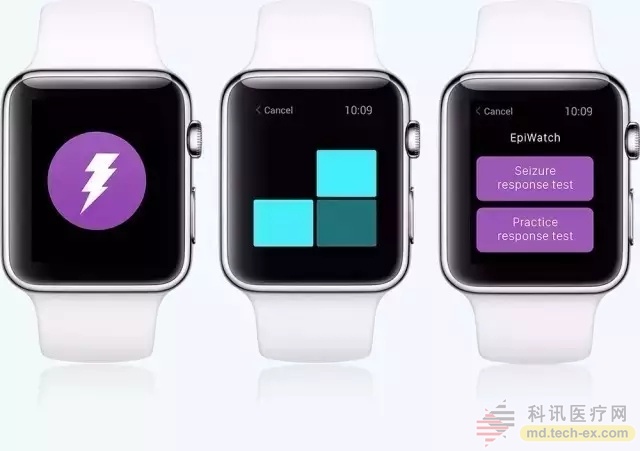
EpiWatch interface
The sudden increase in heart rate is a key feature of seizures, so once the EpiWatch app is launched, the Apple Watch sensor will be activated at the same time, heart rate monitoring will be turned on, and Apple Watch will use its built-in sensor to continuously collect the patient's heart rate and Human motion data, which includes data on human tremors or convulsions. This is a very difficult thing. The biggest difficulty at present is to write an algorithm--the algorithm is to judge whether the cause of tremor is seizure or normal movement of the human wrist. And even if the algorithm is written well, Apple Watch with six-axis accelerometer and gyroscope is not enough to clearly identify seizures.
Therefore, the objective data recorded by the Apple Watch sensor alone is not enough to identify seizures. EpiWatch applications require patients to perform simple tests to provide subjective data.
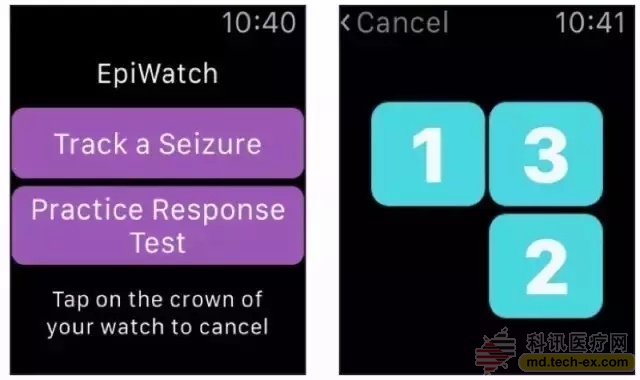
Patient awake test interface
After the EpiWatch app launches, a large blue square appears on the Apple Watch screen, and the patient needs to click on the square to remove it. After a few seconds, three blue buttons with digital codes (usually 1, 2, 3) appear on the screen. The patient needs to eliminate the blue squares in order.
These tests are repeated during the course of a seizure. This is how the EpiWatch app determines the duration and severity of each episode. Most epilepsy lasts for 1-3 minutes, but the patient's full recovery may last for more than 10 minutes, Krauss said. The complete end of epilepsy is marked by the patient's ability to quickly tap the blue square on the screen.
"If the patient is not awake for more than 5 minutes and his heart is jumping very fast, then we can be sure of seizures," Krauss said.
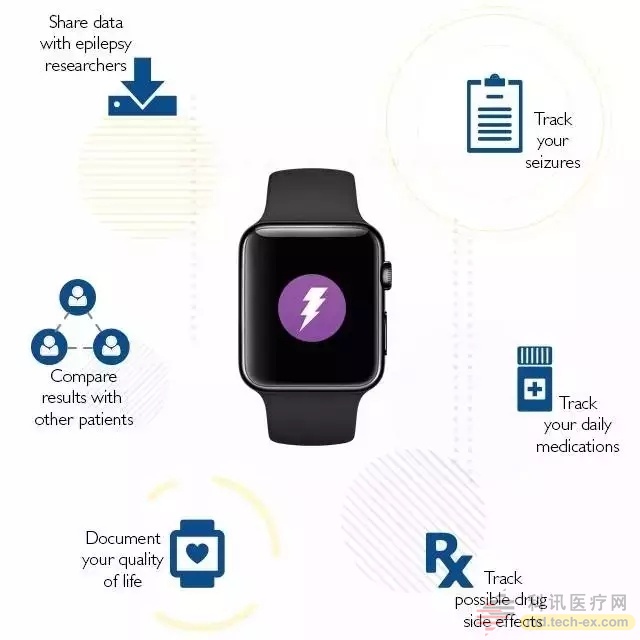
Six features of EpiWatch
A month ago, EpiWatch misjudged a patient's seizure during the test, but it didn't actually happen. But Crone and Krauss are still very happy, because this mistake reveals a flaw in their algorithm that can be corrected.
The biggest challenge in treating epilepsy is the incomplete, contradictory and erroneous information that is obtained from patients and their families. This is not because of who's wrong - epilepsy usually affects the patient's memory, most people with epilepsy will have memory disorders, or remember nothing at all. About 40% of patients with epilepsy simply don't remember what happened just now, and some even strongly denied that they had seizures.
In many cases, the data recorded by the Apple Watch is in opposition to the patient's own memory. But in most cases, it turns out that the data recorded by Apple Watch is correct, and the patient's own memory is wrong. Megan Conroy, CEO of Capture Proof, a smartphone-based medical imaging platform, said, "Not only does the patient provide the wrong information, but the patient's family often provides a lot of untrue information. Especially at great pressure. In the case, their words form a very subjective version."
In addition, using language to describe the nuances of disease itself is a very difficult thing. "The "twitching" in your mouth and the "shaking" in my mouth and the other person's "tremor" may be completely different," Conroy said. "In English, we only have a few words to describe the many different symptoms. This is not enough."
For the current treatment of epilepsy, the introduction of any objective data has been greatly improved. Many doctors now send a record to the patient, who needs to record the date and number of episodes. Crone said: "EpiWatch does not automatically send patient data to the doctor. Patients can choose to present the data to the doctor." Currently, there are approximately 500 epilepsy patients in the United States using the EpiWatch app on Apple Watch. They all agreed to share their epilepsy data anonymously.
At the same time, the EpiWatch app has changed the way people with epilepsy remind their families when they are sick. Shaina said that she used to send a text message to her husband before she felt that she was going to epilepsy, but she came before she had not come and finished her epilepsy, so her husband often received a similar prank like "hjhjgachnssbb08y". information. Now, EpiWatch will automatically notify her husband once she can identify the seizure.
For patients with epilepsy, the EpiWatch application can alleviate the patient's stress and anxiety. At the same time, the EpiWatch app enables people living in epilepsy to be more actively involved in managing their disease, thereby transforming their roles from passive victims to active observers.
"EpiWatch encourages people with epilepsy to go out more independently. At least, their families will be more reassured that they go out alone," Crone said. "This will greatly improve their quality of life."
Source: Electronic Engineering
Plastic additives, also known as plastic additives, are compounds that must be added to polymers (synthetic resins) to improve their processing properties or to improve the properties of the resin itself. For example, in order to reduce the molding temperature of PVC resin, to make the product soft and added plasticizer; Another example is to add foaming agent in order to prepare light weight, anti - vibration, heat insulation, sound insulation foam plastics; The thermal decomposition temperature of some plastics is very close to the molding temperature, and the molding cannot be done without adding heat stabilizer. Therefore, the plastic assistant agent occupies a particularly important position in the plastic forming process. A class of auxiliary agents for plastic molding products, including plasticizer, heat stabilizer, antioxidant, light stabilizer, flame retardant, foaming agent, antistatic agent, mildew agent, colorant and whitening agent (see pigment), filler, coupling agent, lubricant, mold release agent and so on. Colorants, brighteners and fillers are not special plastics chemicals, but the general use of materials.
Versatile Biobased Polyols,Bio-Based Versatile Biobased Polyols,Materials For Pu Foam Applications,Self-Catalytic Polyols For Spray Application
Xingbang High Molecular Materials Co., Ltd. , https://www.chemicaladditive.com